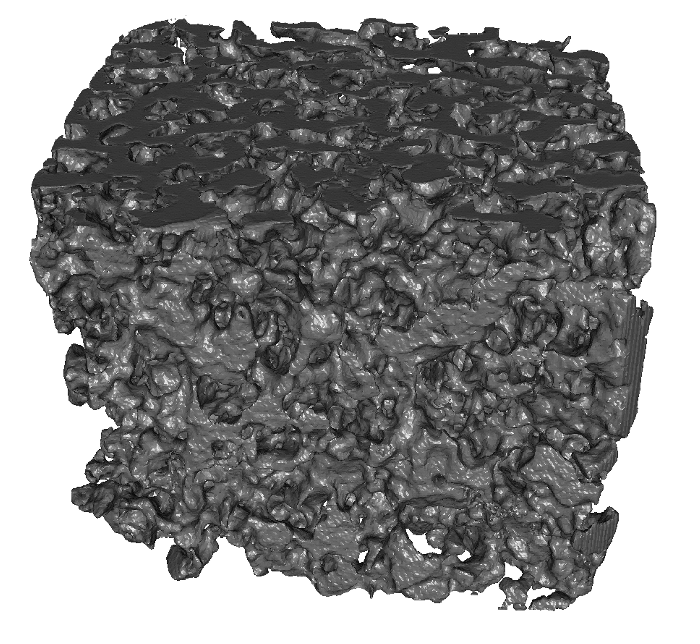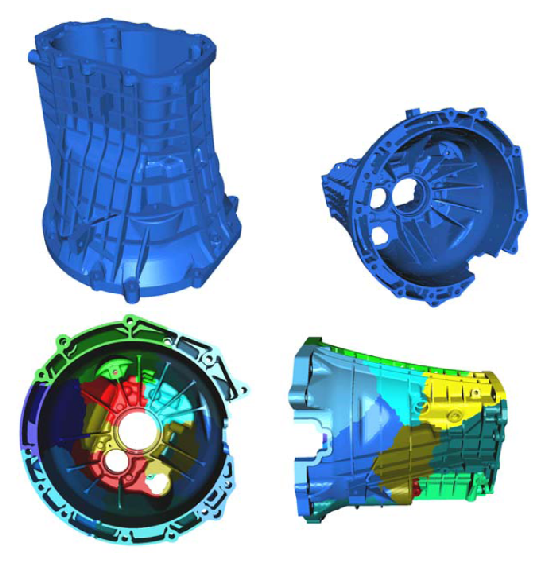CCSS - Forschungsprojekte des Lehrstuhls für Numerische Mathematik und Numerische Simulation
Numerical modeling and simulation of arterial walls
Stent surgery and balloon angioplasty are standard treatments for ateriosclerotic arteries. The treatment of
arteriosclerosis by a balloon angioplasty and also the placement of a stent involves large deformations of the
arterial walls. The numerical simulation of these large deformations is a challenging task which involves many
computational state of the art techniques. Numerical methods for anisotropic, almost incompresible nonlinear
hyperelastic elasticity models are developed including apropriate finite elment discretizations, robust
nonlinear solvers and highly parallizable domain decomposition methods. This project is joint work with Prof.
Dr.-Ing. Jörg Schröder, Institute for Mechanics, Abt. Bauwissenschaften, Fakultät für Ingenieurwissenschaften,
Essen and Prof. Dr. med. Raimund Erbel, Westdeutsches Herzzentrum, Universiätsklinik Essen.

Stress in an arterial wall. See D. Balzani, D. Böse, D. Brands, R. Erbel, A. Klawonn, O. Rheinbach, J. Schröder (2010), submitted.
Numerical methods for finite micromorphic elasticity problems
Micromorphic elasticity models are applied in the description of cellular materials, metallic foams or material
inhomogeneities. They also help to model size effects in a natural way, i.e., small samples of a material
behave comparatively stiffer than large samples which has important applications in the mechanics of nano devices. The micromorphic models considered here consist of a coupled system of nonlinear partial differential equations which are discretized by finite elements and are solved by a staggered algorithm. Each of the subproblems arising from this algorithm again require sophisticated numerical methods for their solution, including robust nonlinear solvers and domain decomposition techniques suitable for parallel computing. This is a joint project with Prof. Dr. Patrizio Neff, Lehrstuhl für Nichtlineare Analysis und Modellierung, and Dr. Stefanie Vanis, Lehrstuhl für Numerische Mathematik, Fakultät für Mathematik, Essen.

A metal foam. Image from S. Vanis, O. Rheinbach, A. Klawonn, O. Prymak, M. Epple (2006)
Highly scalable parallel domain decomposition methods
Domain decomposition methods are an efficient approach for the solution of elliptic partial differential
equations on parallel computers. Here, we understand by domain decomposition methods preconditioned iterative algorithms for the solution of large linear systems of equations obtained, either directly or by linearization, from the discretization of partial differential equations. In such methods, the domain, on which the partial differential equation has to be solved, is decomposed into a number of nonoverlapping subdomains. In each step of the iterative method and for each subdomain, a local problem is solved. This local problem is often an approximation of the partial differential equation restricted to the subdomain; here, we neglect for the moment that the boundary conditions are usually different for the local problem and the problem on the original
domain. Depending on the particular domain decomposition method, the local problem is solved approximately
itself or exactly, using a direct algorithm, e.g., a Gaussian elimination algorithm. For elliptic problems,
also a small global problem is needed in order to obtain a parallel scalable algorithm, i.e., to exploit
efficiently a growing number of processors of a parallel computer; in general one processor can obtain more
than one subdomain. Robust and parallel scalable algorithms are developed for different problems including very demanding and difficult structural mechanics problems. Scalability has been proven on up to 65 536 cores of the JUGENE computer in Jülich and also on up to 4128 cores of the Cray XT6m at the Universität Duisburg-Essen.

A domain decomposition for parallel computing. Image from Klawonn and Rheinbach (2006).
